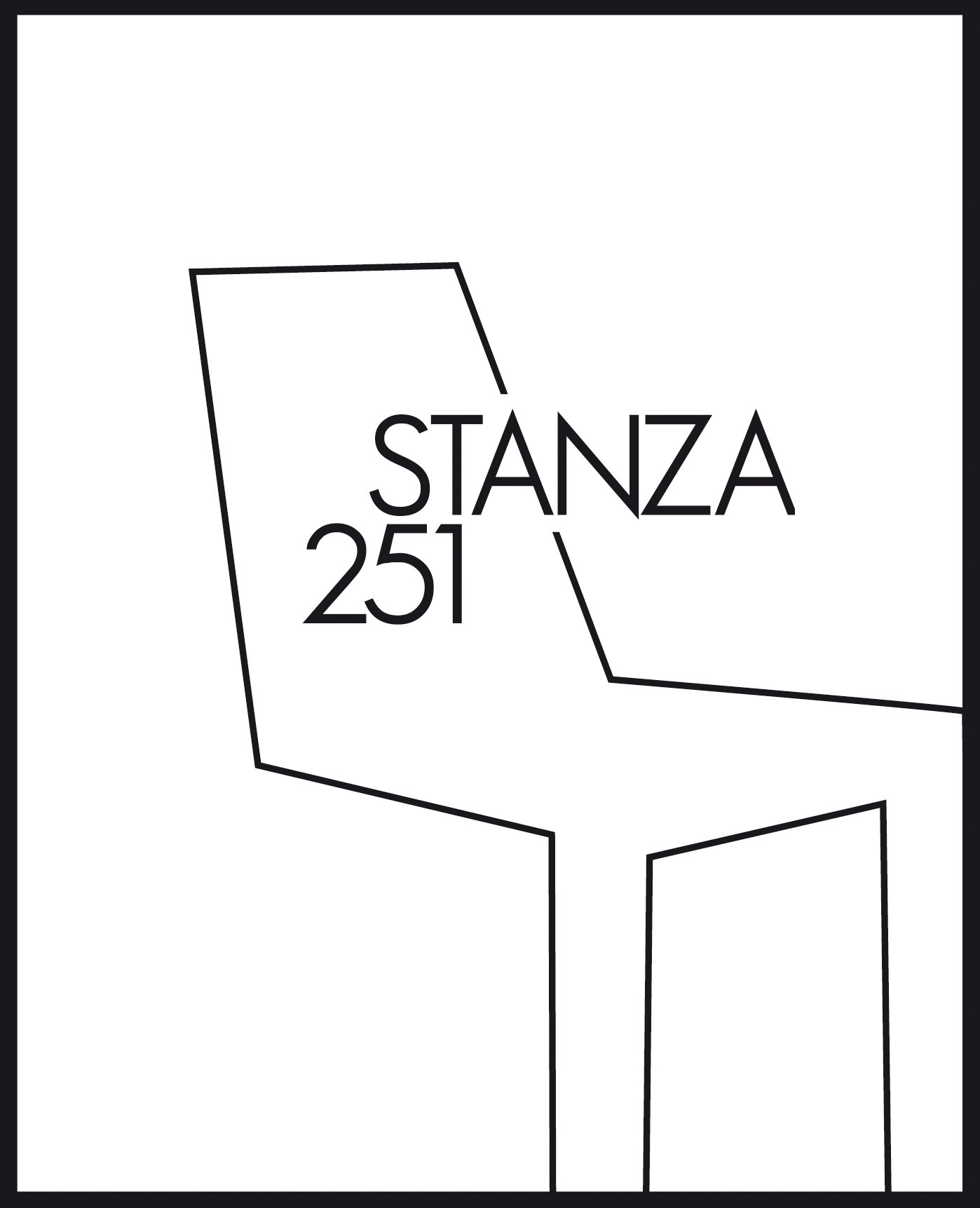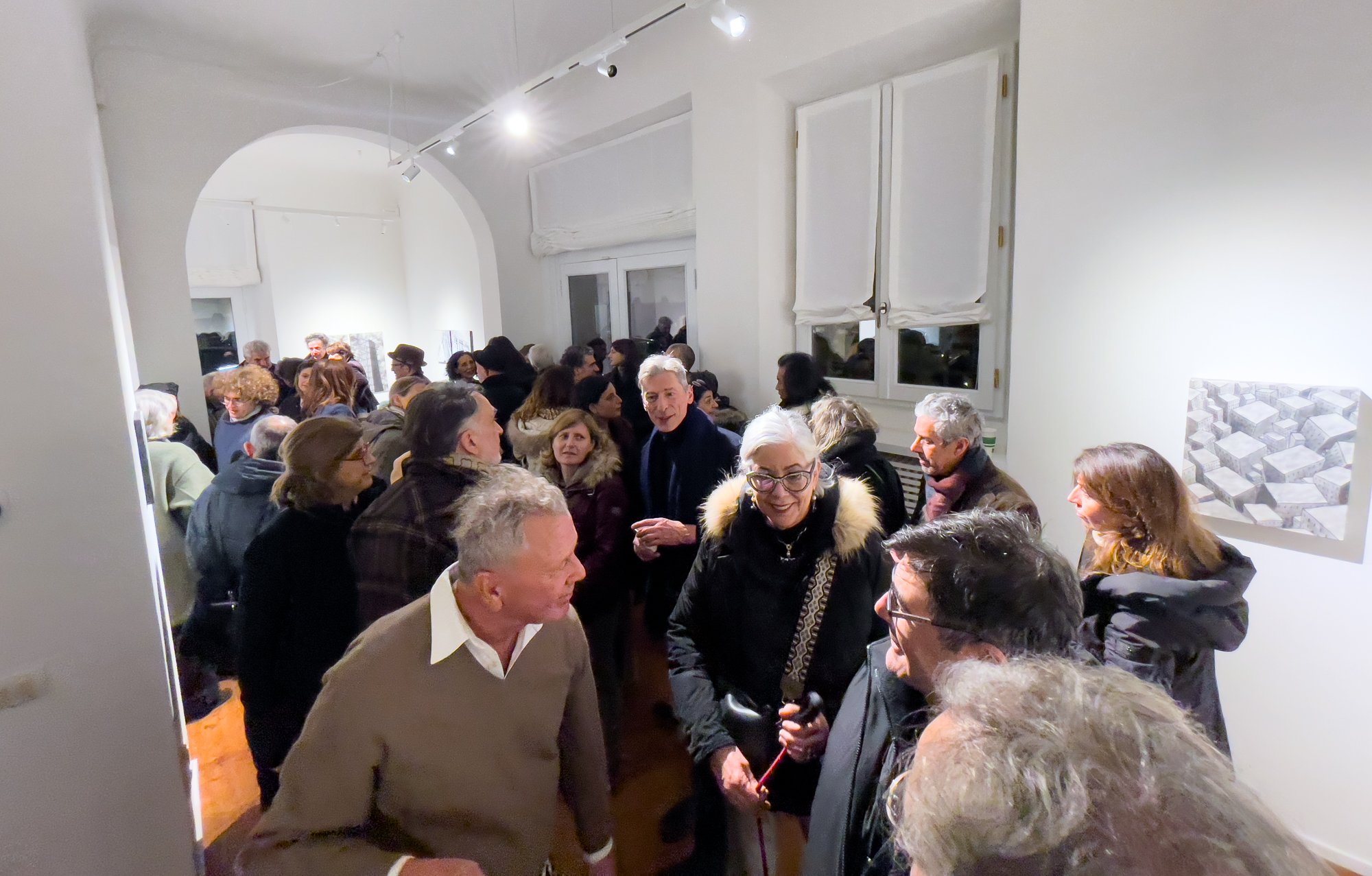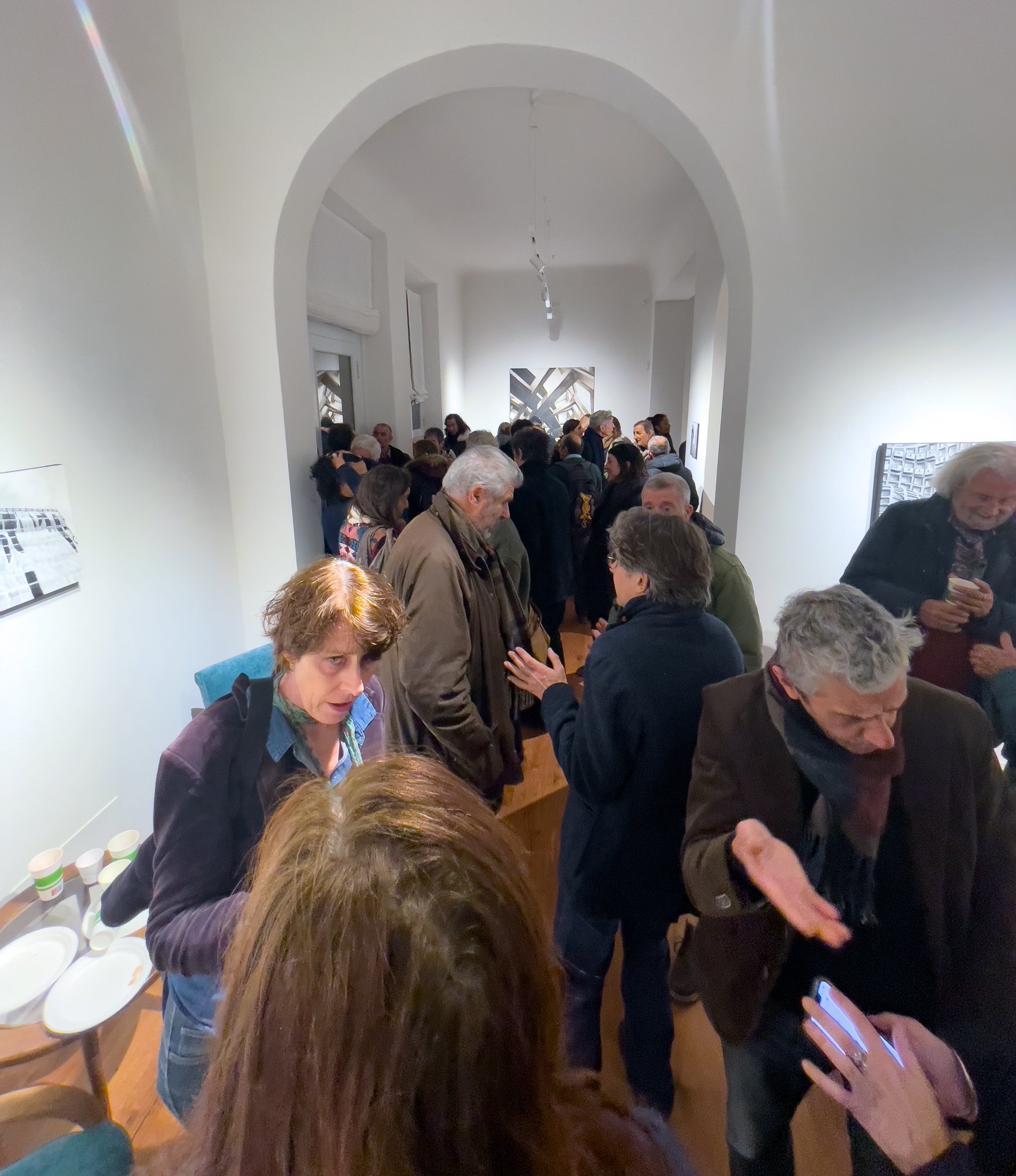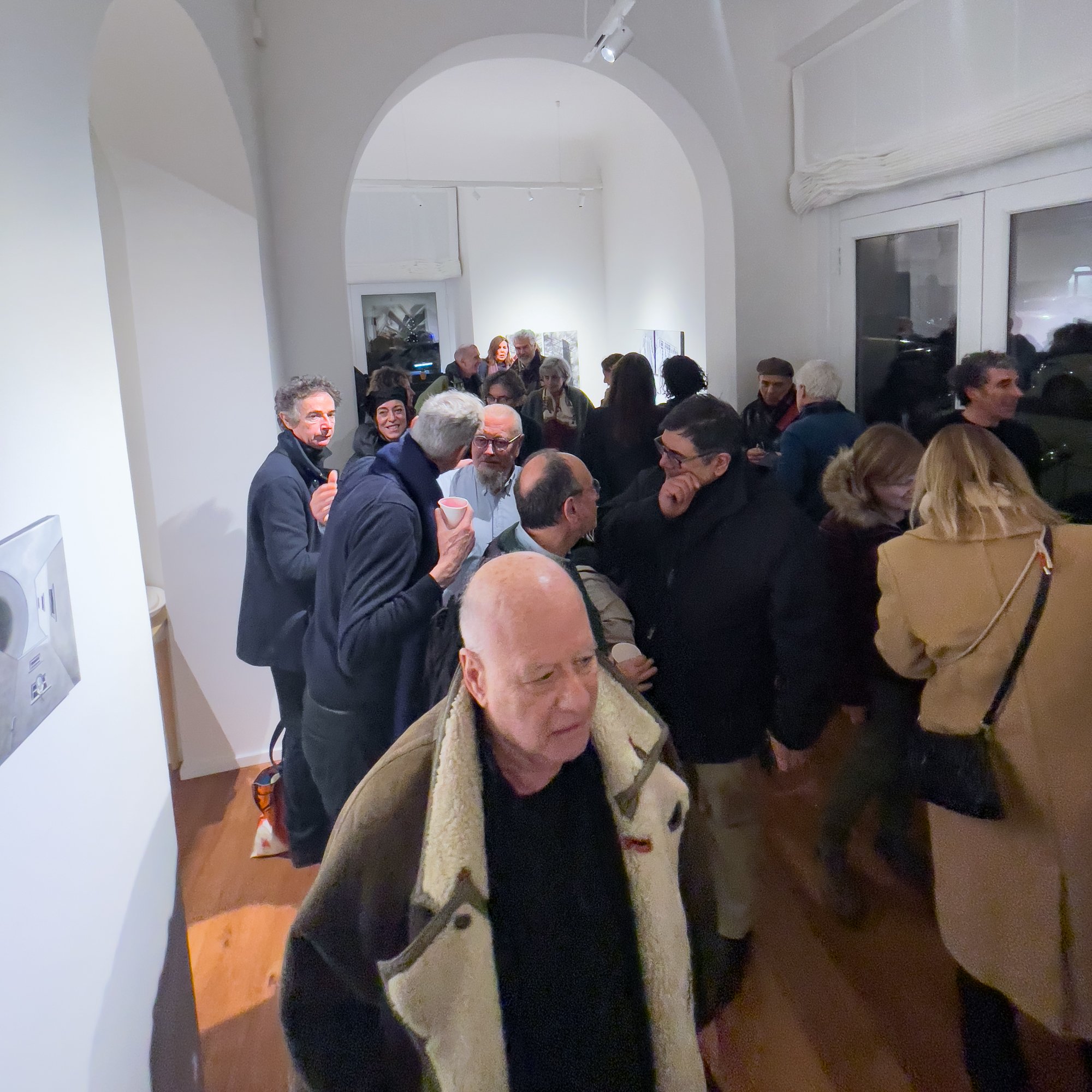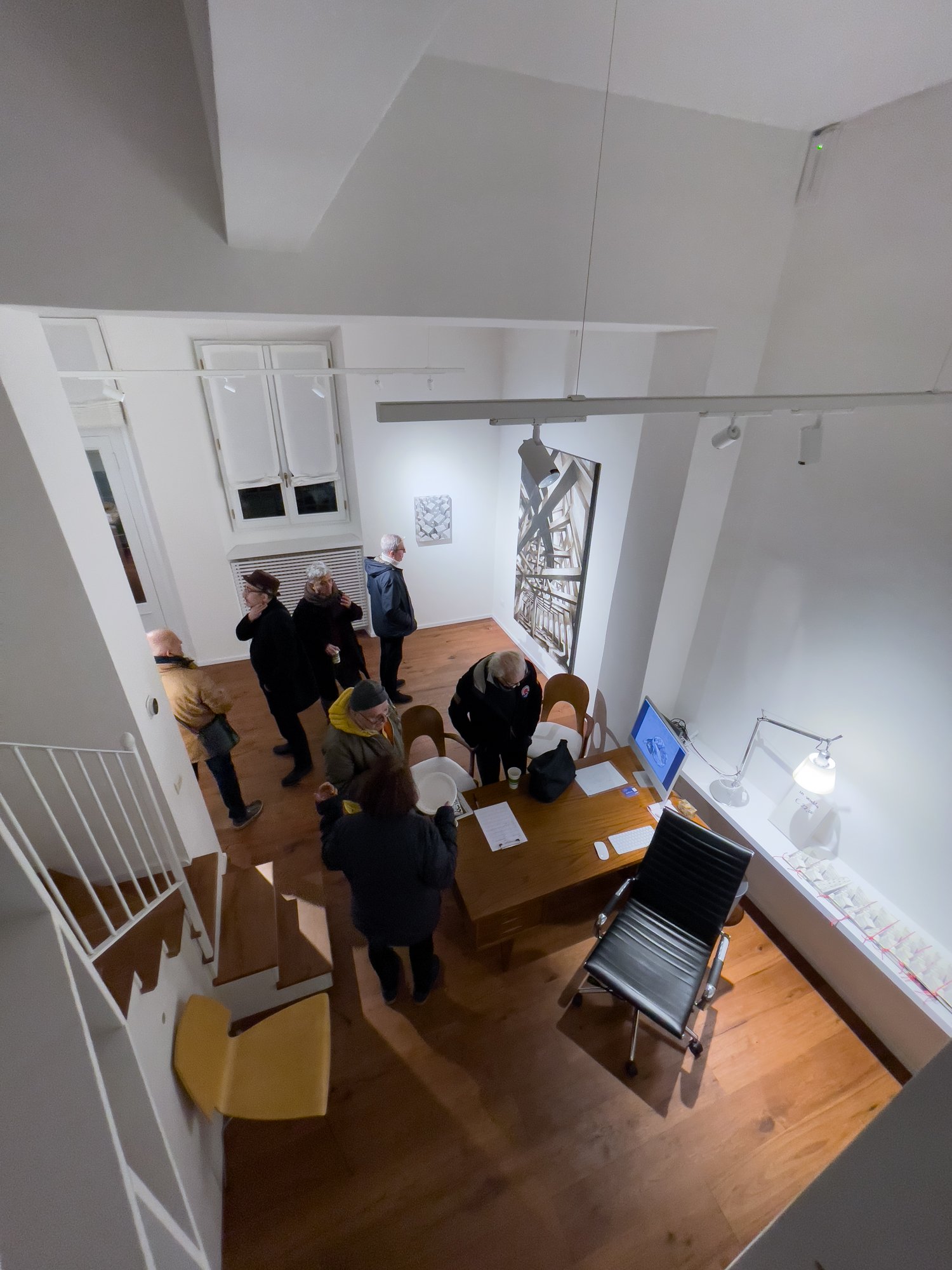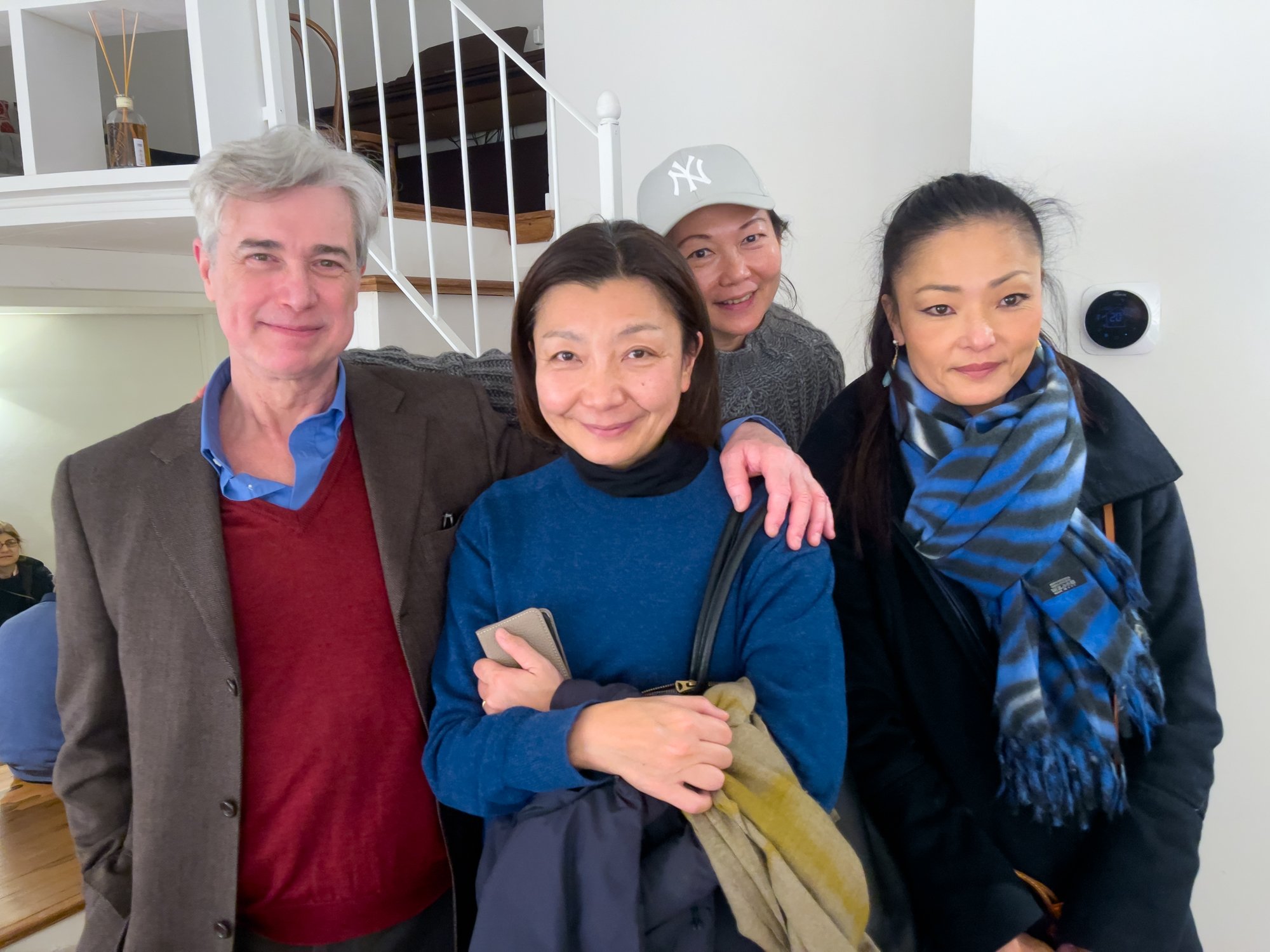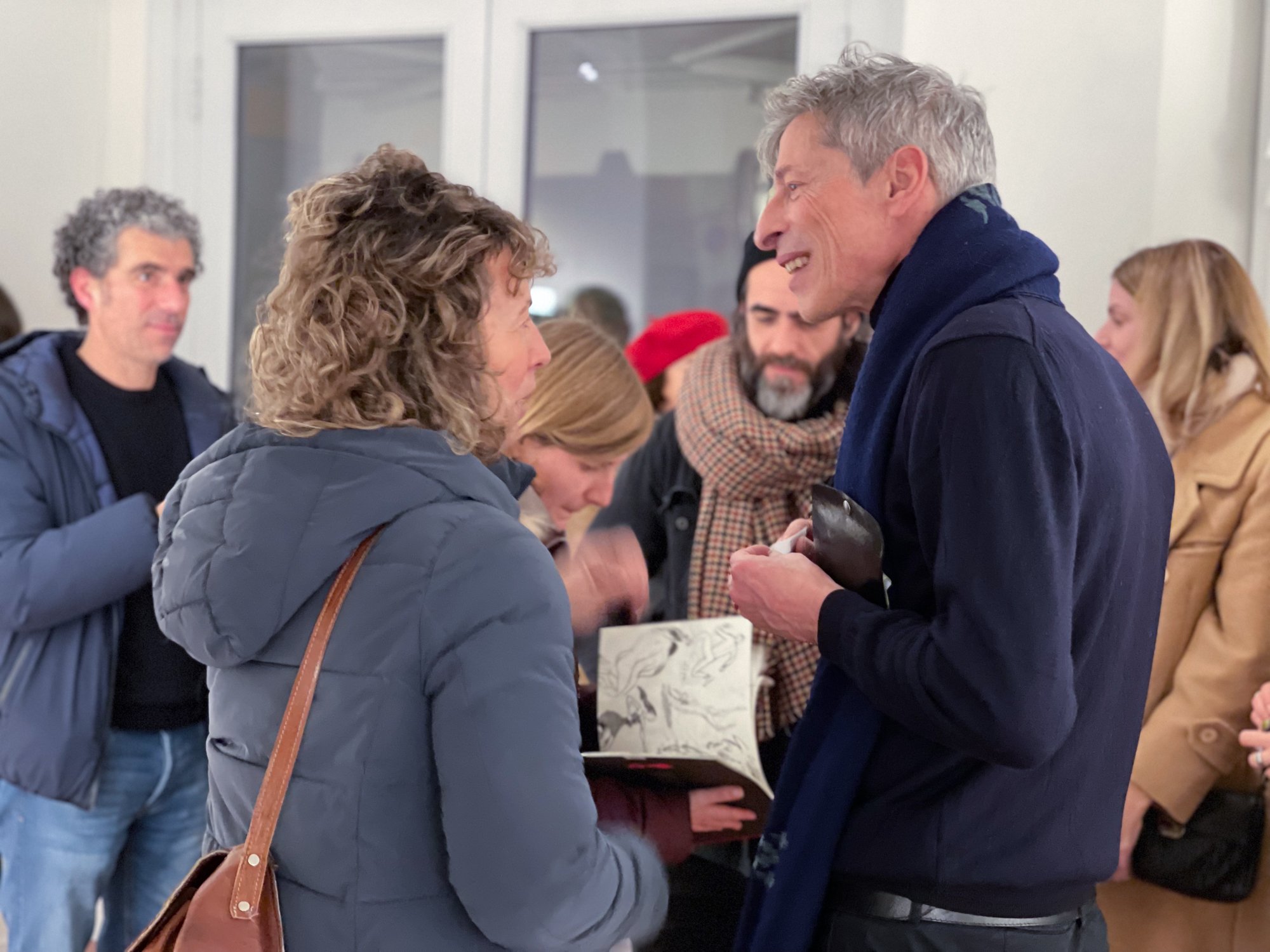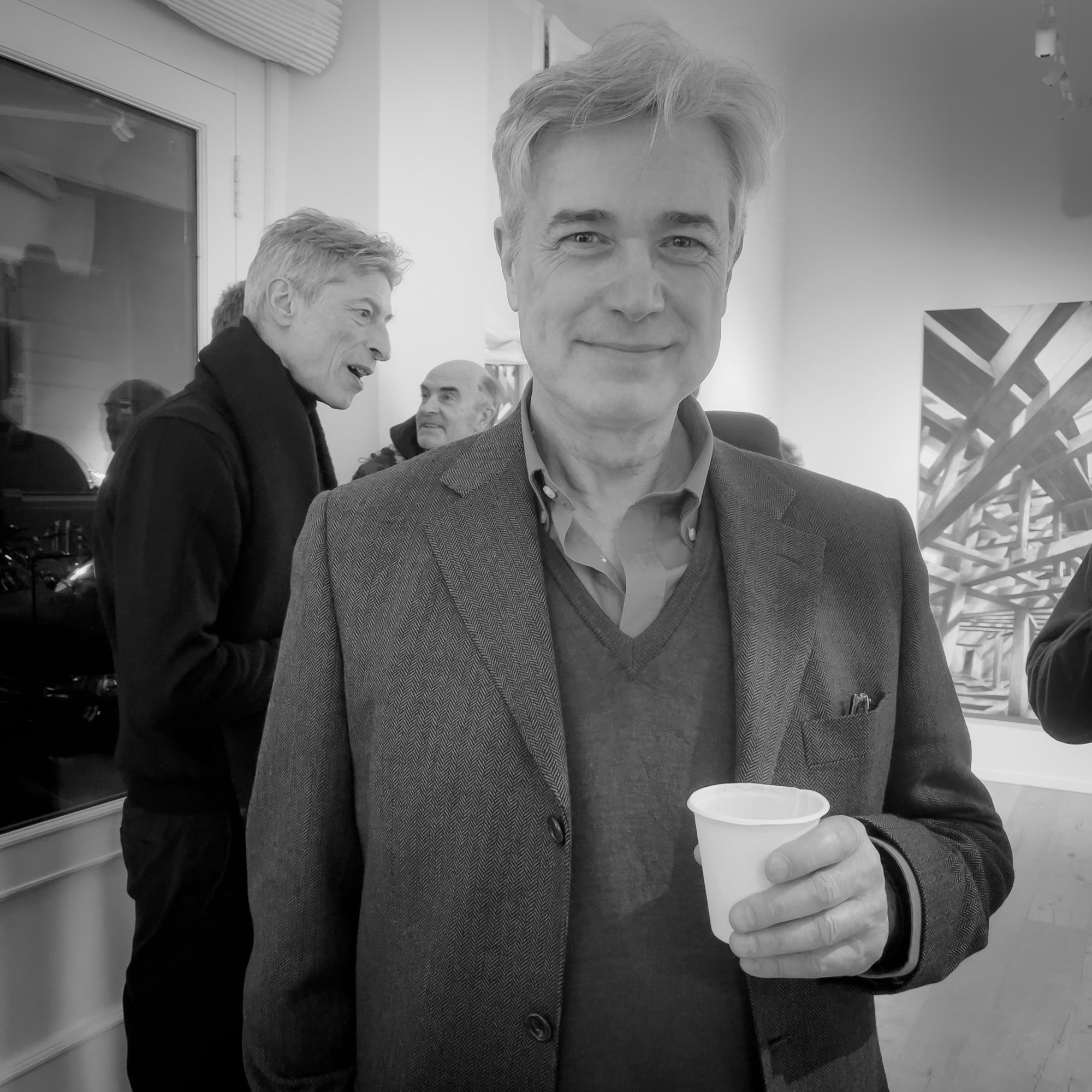Luca Matti
La vita intrepida
Dicembre 2023 - Febbraio 2024
E' sorprendente che in una città come Firenze (luogo simbolo dell'arte rinascimentale nel mondo) sia nato ed operi un artista come Luca Matti che dedica una buona parte del proprio lavoro pittorico alla creazione-riproduzione di architetture che acquistano il valore di una assoluta modernità perduta.
Partito anni fa da una attitudine quasi fumettistica (segno immediato, grande potenza comunicativa, personaggi inconfondibili) Luca Matti è andato poi affinando questa sua componente, inserendola in un ampio universo espressivo. Oggi pratica una pittura figurativa con estrema attenzione nell'uso del colore (viraggio tonale sulla gamma del grigio o dell'ocra più terrosa) che ci restituisce intricate architetture, foreste impenetrabili, metropoli con edifici affastellati uno sopra l'altro. Altre volte fanno la loro apparizione delle sculture di gomma nera che raffigurano figure animalesche un po' mostruose nello stile del romanzo Pasto nudo di William S. Burroughs e del relativo film diretto da David Cronenberg. In certi casi la scultura può essere di formato ridottissimo, ad esempio una semplice pallina da ping pong decorata in modo da risultare un palcoscenico sontuoso, capace di contenere un intero mondo sulla sua minima superficie. Se siete curiosi di scoprire i riferimenti alla storia dell'arte e le influenze di altri artisti contenuti nelle opere di Matti, ecco una piccola lista ragionata. Potremmo iniziare con le Carceri di invenzione di Giovanni Piranesi, la celebre serie di incisioni (1745-1760) raffiguranti architetture monumentali ed ossessive. Naturalmente dobbiamo aggiungere le opere di Escher, l'artista olandese maestro degli inganni prospettici, famoso creatore di sorprendenti punti di vista. Quando il segno di Matti si fa più tenebroso e turbolento, i suoi oscuri personaggi rivelano una certa affinità con lo stile di William Kentridge. A questi maestri aggiungiamo una più generale parentela con l'Espressionismo tedesco (pittura e cinema) di inizio Novecento, una delle più potenti ed influenti avanguardie del secolo scorso. Matti dipinge architetture novecentesche corrose dal tempo, vuoti spazi abbandonati, palazzi enigmatici che si stagliano contro il cielo e ci parlano di una modernità invecchiata. E' il caso delle opere contenute in questa mostra personale – La vita intrepida - allestita a Firenze presso lo spazio espositivo Stanza 251, una selezione di lavori recenti (alcuni realizzati appositamente per questa occasione) che mettono in scena edifici misteriosi, una serie di luoghi ridotti ad una consumata essenzialità.
Potrebbe sembrare una collaudata avventura della nostalgia, indirizzata a recuperare il fascino dell'archeologia industriale. Ma in verità i conti non tornano, manca sempre qualcosa, oppure vediamo qualcosa di troppo. Vengono dal passato o dal futuro queste strutture? Difficile dirlo con certezza. Matti dipinge sempre oggetti e figure trasportando tutto fuori da un preciso orizzonte temporale. L'edificio interamente ricoperto dalle impalcature – vagamente minaccioso - a quale epoca appartiene ? E' una rovina disabitata? Lo scheletro di un albergo in costruzione? Una prigione del futuro? Tempo e architettura danzano dentro queste opere, apparentemente realistiche, dipinte da Luca Matti con implacabile esattezza ma non in modo calligrafico. Probabilmente è giusto considerarle oggetti indefinibili, senza alcuna funzione tranne quella di suscitare curiosità ed emozione in chi le osserva. Forme-esca per accendere la nostra immaginazione.
Stanza 251
It is surprising that an artist such as Luca Matti was born and works in a city like Florence (a place that is a symbol of Renaissance art in the world). He dedicates a good part of his pictorial work to the creation-reproduction of architectures that acquire the value of an absolute lost modernity.
Starting out years ago with an almost comic-strip attitude (immediate sign, great communicative power, unmistakable characters) Luca Matti has gone on to refine this component of his work, inserting it into a broad expressive universe. Today, he practises figurative painting with extreme care in the use of colour (tonal toning on the grey or earthier ochre range) that gives us intricate architecture, impenetrable forests, metropolises with buildings piled one on top of the other. Other times, black rubber sculptures make their appearance, depicting somewhat monstrous animal figures in the style of William S. Burroughs' novel Naked Lunch and the related film directed by David Cronenberg. In some cases, the sculpture may be of a very small format, for instance a simple ping-pong ball decorated to look like a sumptuous stage, capable of containing an entire world on its tiny surface. If you are curious about the references to art history and the influences of other artists contained in Matti's works, here is a short reasoned list. We could start with Giovanni Piranesi's Prisons of Invention, the famous series of engravings (1745-1760) depicting monumental and obsessive architecture. Of course, we must add the works of Escher, the Dutch artist and master of perspective deceptions, famous creator of surprising points of view. When Matti's sign becomes more gloomy and turbulent, his dark characters reveal an affinity with the style of William Kentridge. To these masters we add a more general kinship with early 20th century German Expressionism (painting and film), one of the most powerful and influential avant-gardes of the last century. Matti paints 20th-century architecture corroded by time, empty abandoned spaces, enigmatic buildings that stand out against the sky and speak to us of an aged modernity. This is the case of the works contained in this personal exhibition - La vita intrepida - set up in Florence at the Stanza 251 exhibition space, a selection of recent works (some of them created especially for this occasion) that stage mysterious buildings, a series of places reduced to a worn essentiality.
It might seem like a tried and tested adventure of nostalgia, aimed at recovering the charm of industrial archaeology. But in truth the accounts do not add up, something is always missing, or we see something too much. Are these structures from the past or the future? Hard to say for sure. Matti always paints objects and figures transporting everything out of a precise time horizon. The building entirely covered by scaffolding - vaguely threatening - to which era does it belong? Is it an uninhabited ruin? The skeleton of a hotel under construction? A prison of the future? Time and architecture dance within these apparently realistic works, painted by Luca Matti with relentless exactitude but not in a calligraphic manner. It is probably fair to consider them undefinable objects, with no function other than to arouse curiosity and emotion in the observer. Forme-esque to ignite our imagination.
Stanza 251
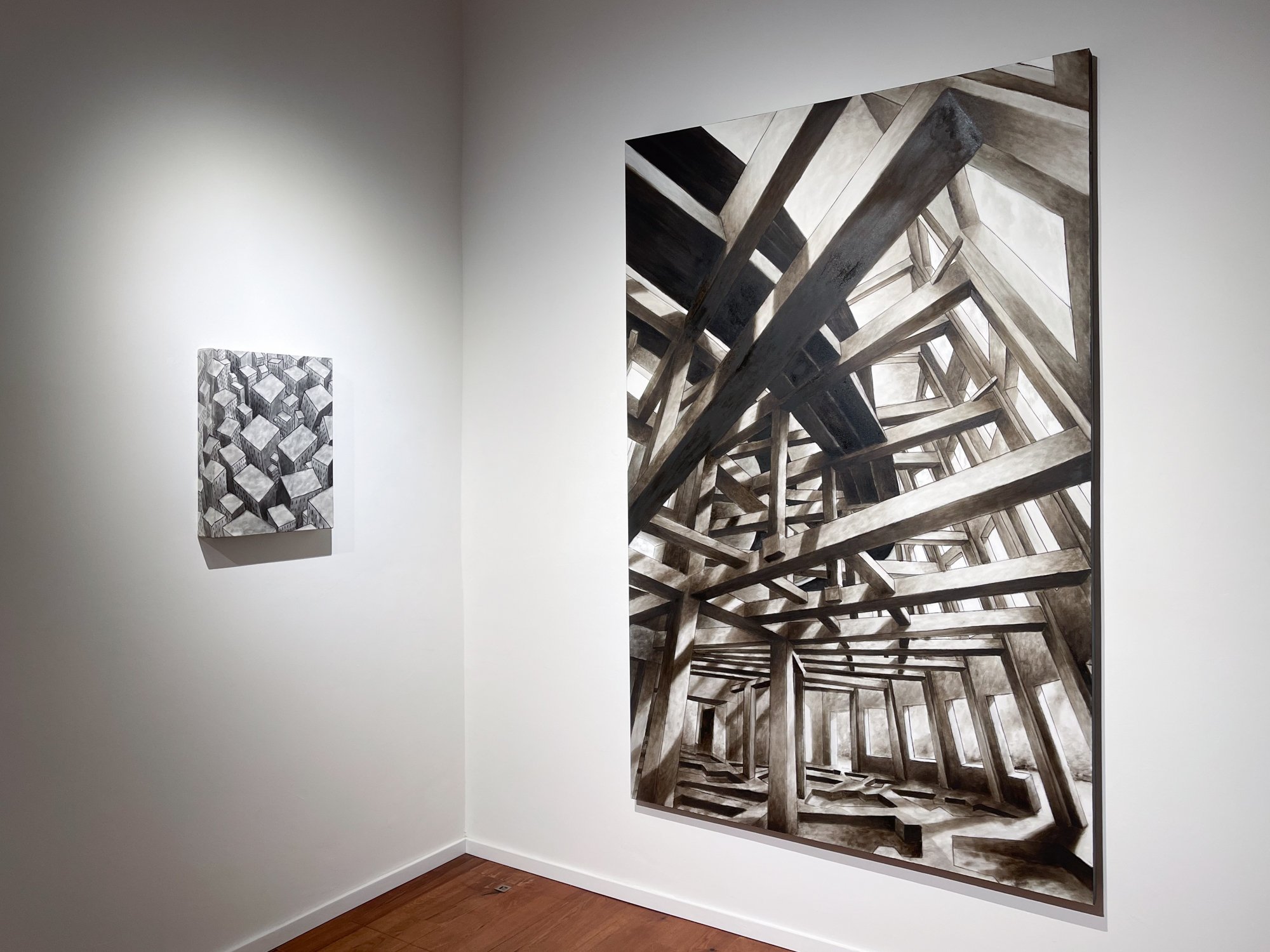
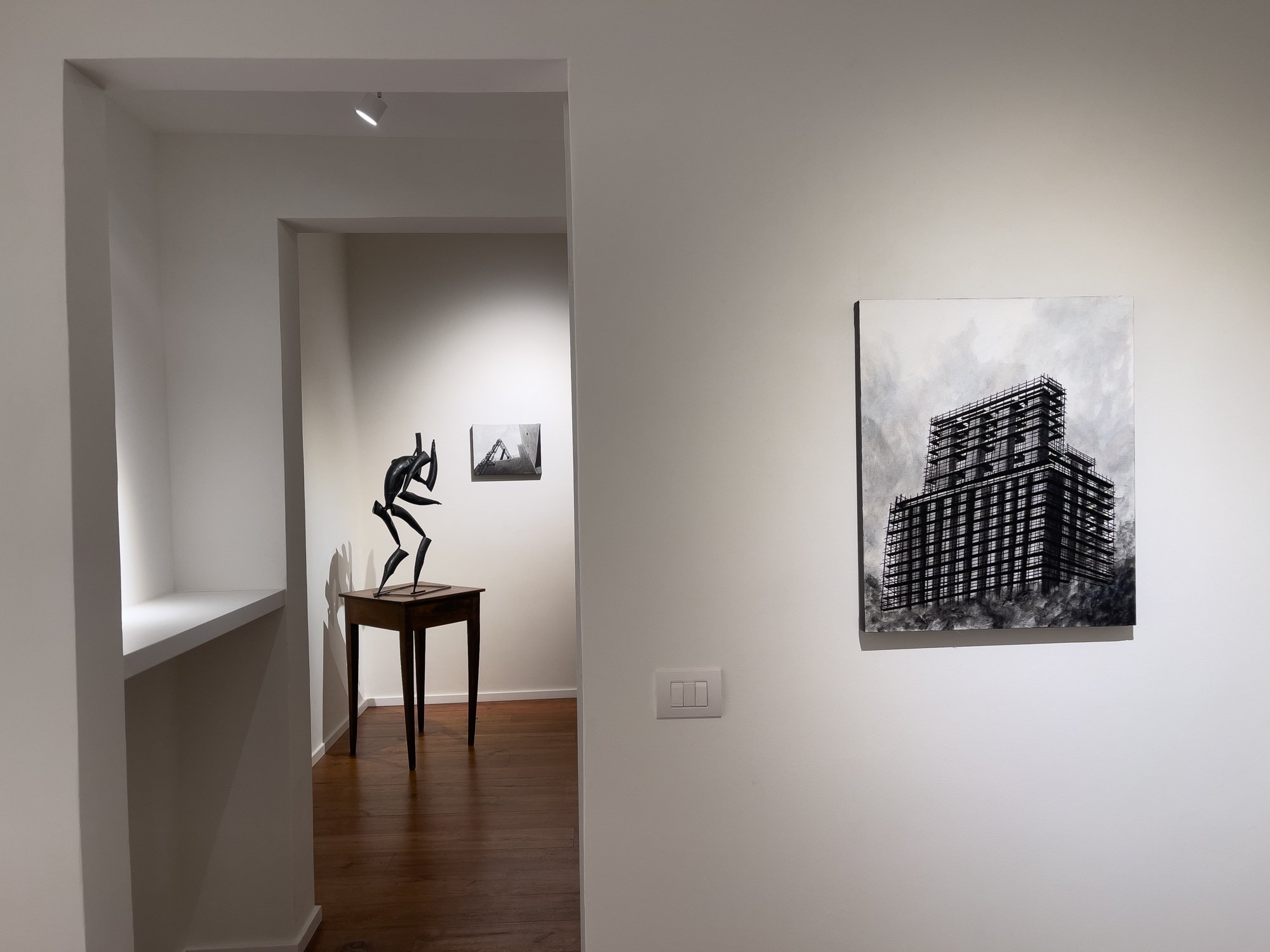
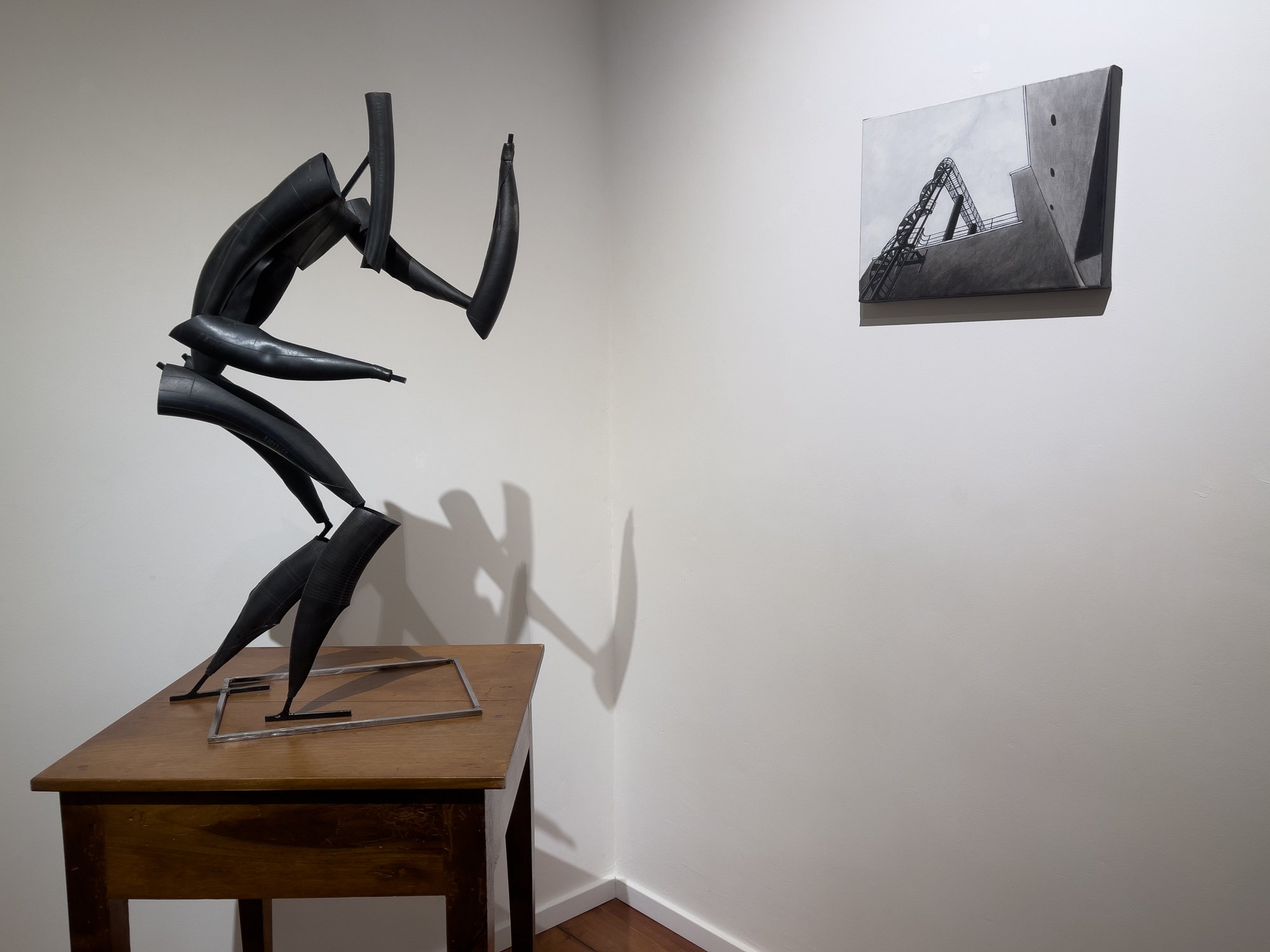

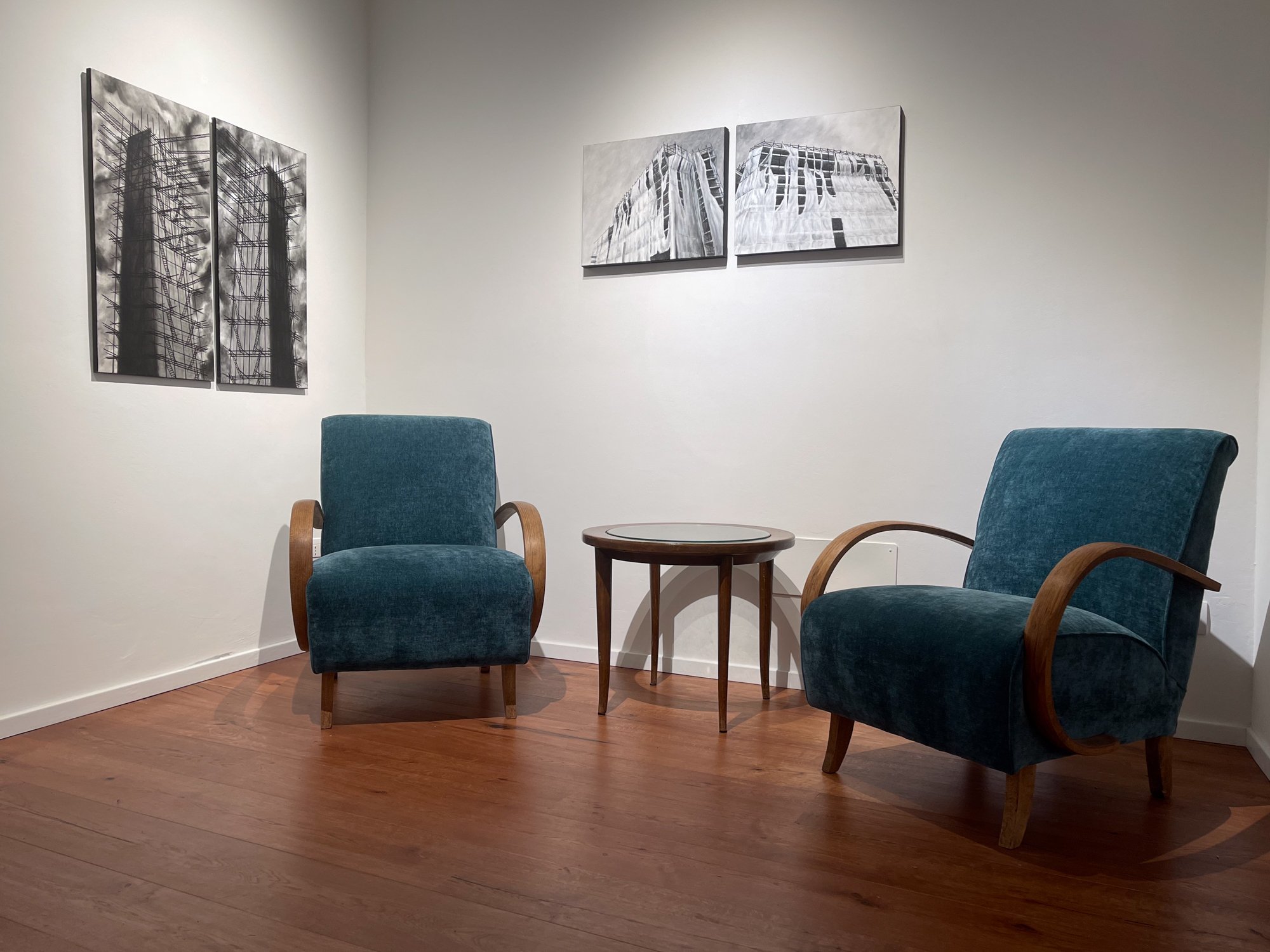

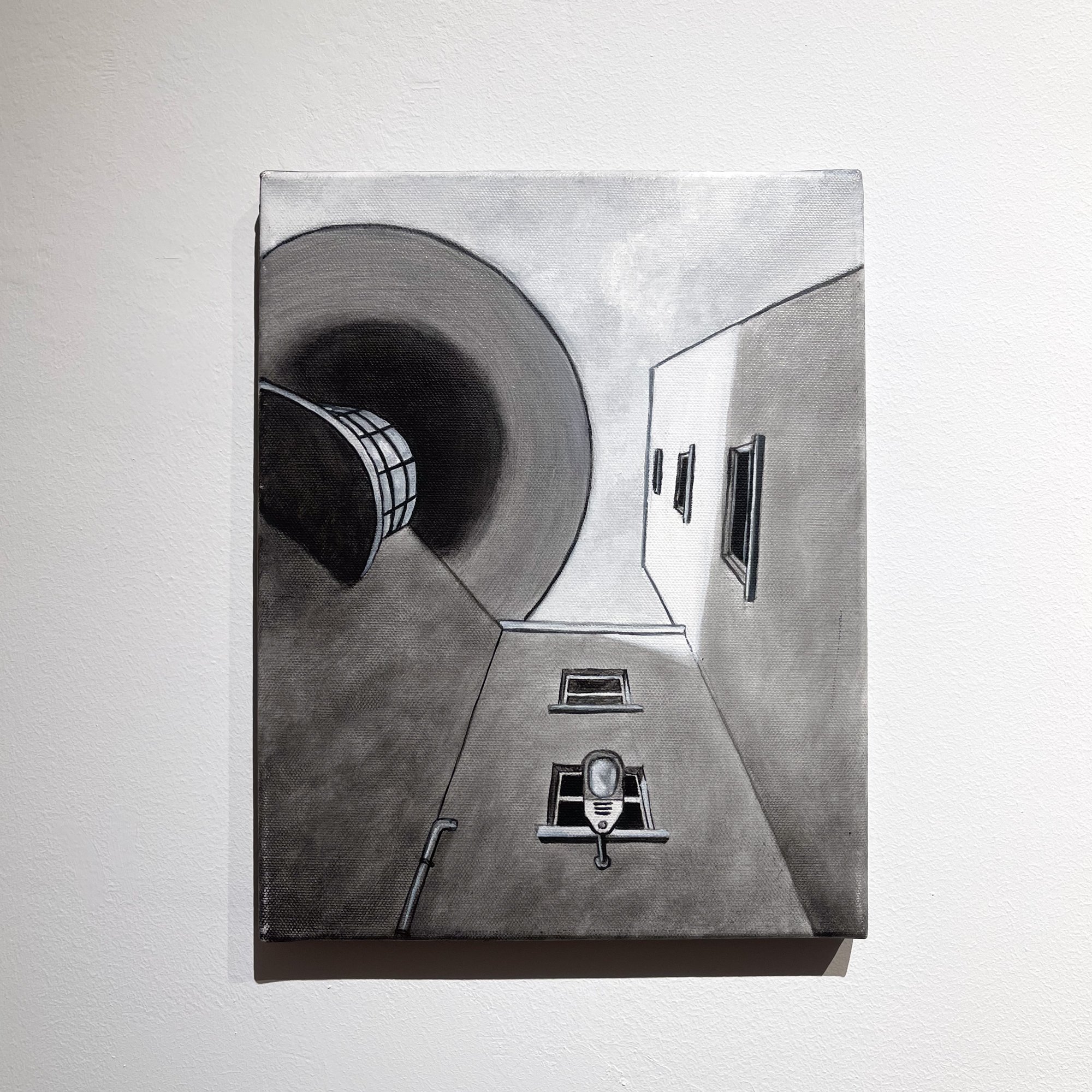

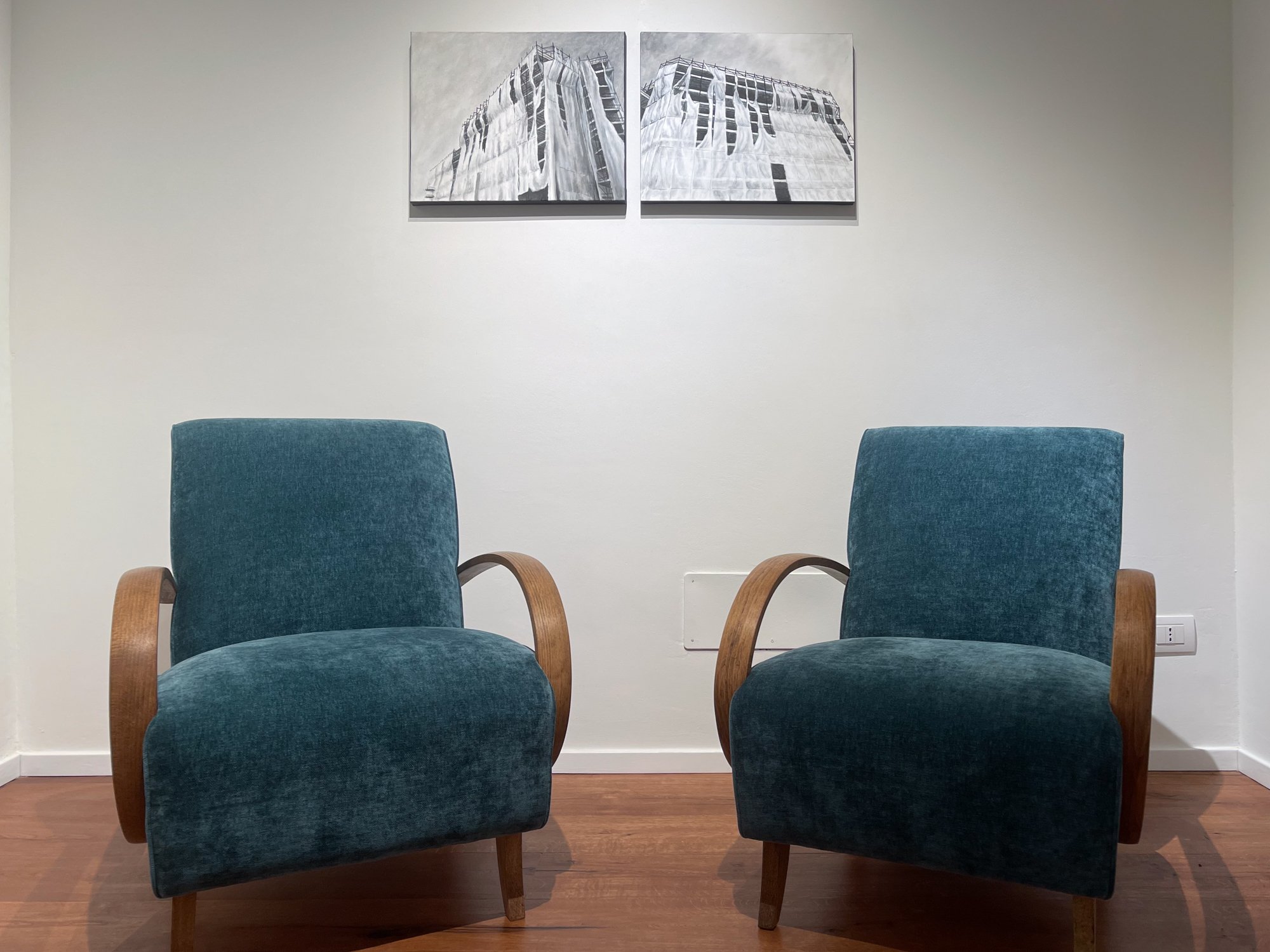
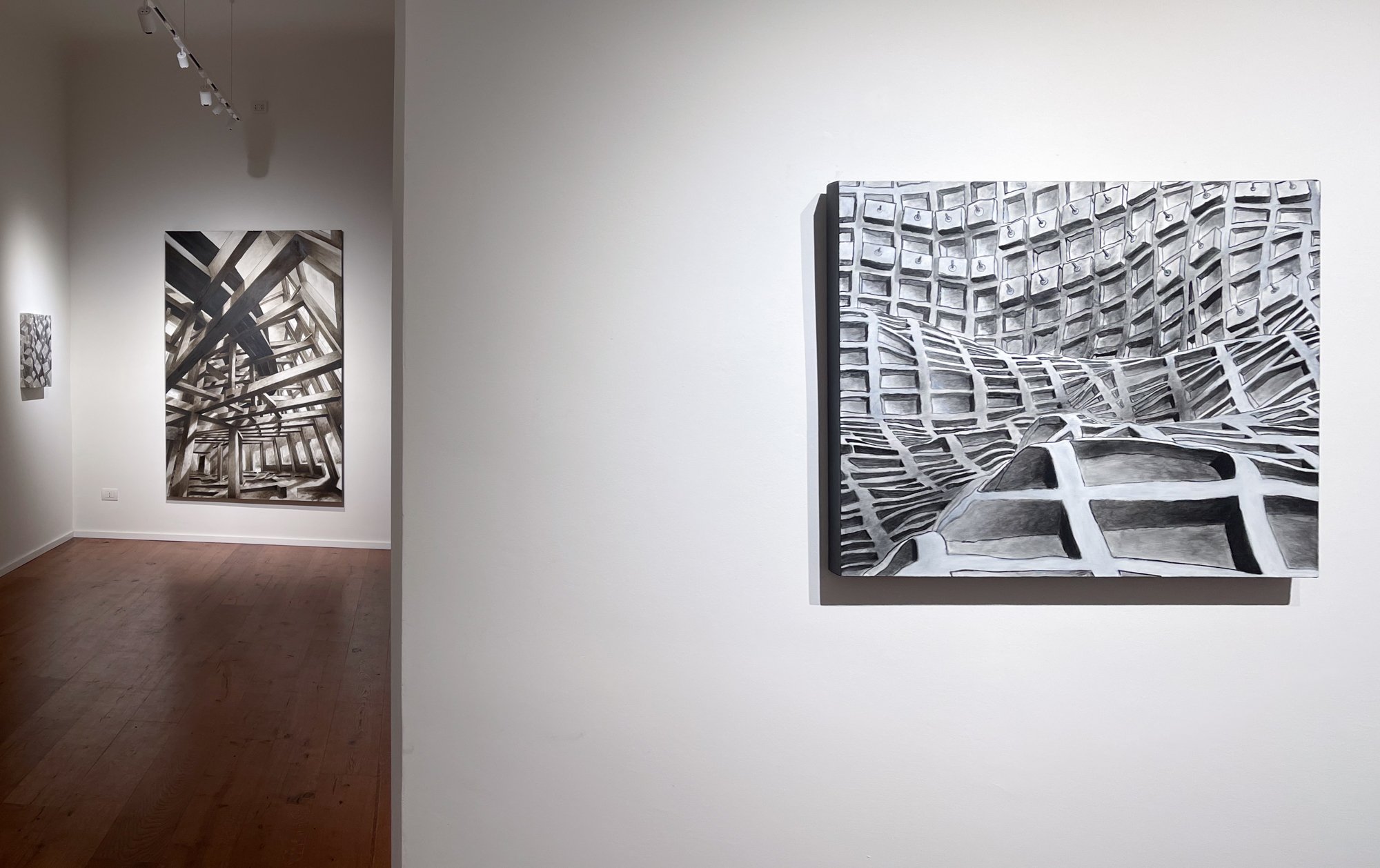
Luca Matti nasce a Firenze nel 1964. Si occupa a lungo di fumetto, illustrazione e grafica, collaborando con case editrici, riviste e agenzie pubblicitarie. Dai primi anni 90 si dedica alla pittura e prendono forma con materiali di recupero le sue prime sculture. La gomma della camera d’aria diviene uno dei materiali più utilizzati nel suo lavoro scultoreo. Dal 1994 il suo lavoro si concentra sulla tematica della città eliminando il colore e usando solo il bianco e nero. L’opera di Luca Matti si presenta intimamente connessa al rapporto che lega l’uomo alla città e negli anni ha composto un’insolita iconografia di oggetti e interni domestici, di figure a metà tra l’uomo e l’insetto e di vertiginosi panorami urbani. Nel suo lavoro non ci sono confini tra disegno, pittura, scultura e videoanimazione. I vari linguaggi si condizionano e si contaminano reciprocamente, dando vita a un immaginario metropolitano.
Luca Matti was born in Florence in 1964. He worked for a long time in comics, illustration and graphics, collaborating with publishing houses, magazines and advertising agencies. From the early 1990s he devoted himself to painting and his first sculptures took shape with recycled materials. Inner tube rubber became one of the most used materials in his sculptural work. Since 1994, his work has focused on the theme of the city, eliminating colour and using only black and white. Luca Matti's work is intimately connected to the relationship between man and city, and over the years he has composed an unusual iconography of domestic objects and interiors, figures somewhere between man and insect, and dizzying urban panoramas. In his work, there are no boundaries between drawing, painting, sculpture and video animation. The various languages condition and contaminate each other, giving rise to a metropolitan imagery.
